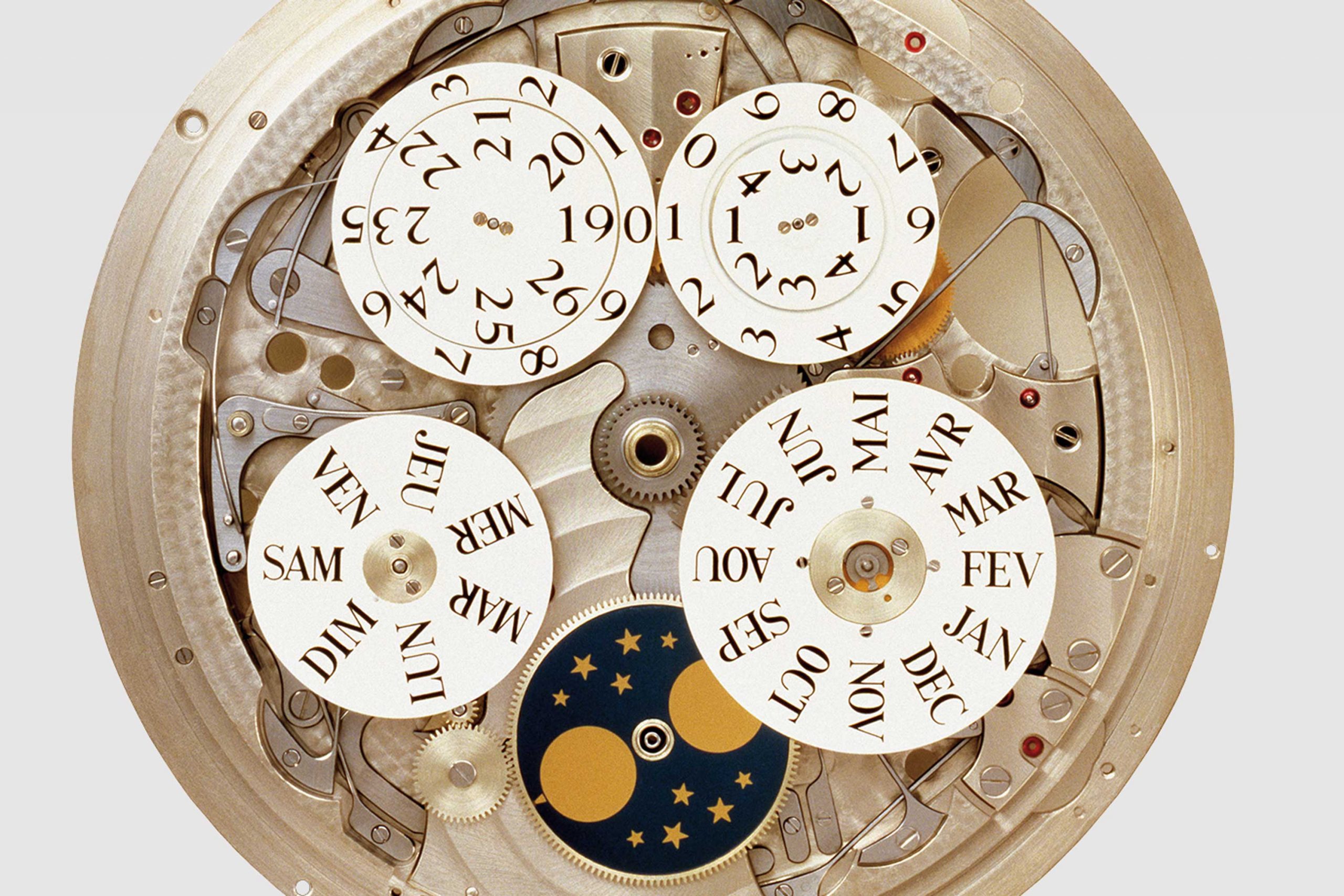Credits: Article and images by Cheryl Chia @ Revolution Watch Magazine. See the original article here - https://revolutionwatch.com/from-here-to-eternity-the-secular-perpetual-calendar/


Svend’s Perpetual Secular Calendar displays the calendar on two dials. The front dial displays the date at three o’clock while the reverse shows the month and the year number in a four-year cycle in a co-axial counter, the secular indicator in a separate subdial and the central hand indicates the year on a 50-year scale. To mark the 20th anniversary of his perpetual secular calendar in 2016, he added a day-of-the-week complication on the dial. Given that the names of the days of the week are derived from the names of the sun, the moon and five planets, these seven bodies are depicted as hand engraved gold buttons on the dial.
As with a traditional perpetual calendar, his mechanism relies on a 48-month cam that makes one revolution every four years. This cam has 48 teeth with four steps of varying depths that corresponds to the length of each month, be it 31, 30, 29 or 28. The grand lever, thus, pivots varying amounts based on the month — further for short months and lesser for long months. At the end of the month, the grand lever locks into the teeth of the date cam and forces the date change. Thus, for a shorter month, the grand lever pivots further, locking the cam at an earlier date.
To account for centurial years that are not leap years, this 48-tooth cam drives a reduction wheel one tooth forward every four years. The reduction wheel, in turn, rotates a 50-tooth secular wheel one tooth forward every eight years. Thus, the secular wheel achieves the speed of one rotation in 400 years. There is no patent protecting his mechanism, hence the bulk of his ingeniously simple solution, in terms of how the secular wheel overrides the month wheel, remains a closely guarded secret.
Before striking out on his own, Franck Muller spent his formative years working at the workshop of Svend Andersen in the 1980s. Together they restored 60 Patek Philippe watches which reside in the Patek Philippe Museum today. It is thus no coincidence that their sources of influence and interests were intertwined. Franck Muller would also go on to build his own world-time watches based on Louis Cottier’s world-time system and together, they even co-developed a perpetual calendar module (2-30) in Svend’s workshop, which Franck implemented in his early watches.
Franck Muller’s secular calendar made its debut in 2007 in the Aeternitas Mega, the watch that ousted the caliber 89 as the most complicated timepiece in the world with a total of 36 complications. They included a tourbillon, a split seconds chronograph, equation of time, a Carillon-Westminster minute repeater as well as grand and petite sonnerie. Like the caliber 89, Franck Muller’s secular calendar featured a retrograde date function. However, it more closely resembles a traditional perpetual calendar with its reliance on a grand lever that samples a 12-month cam.
Credits: Article and images by Cheryl Chia @ Revolution Watch Magazine. See the original article here - https://revolutionwatch.com/from-here-to-eternity-the-secular-perpetual-calendar/











